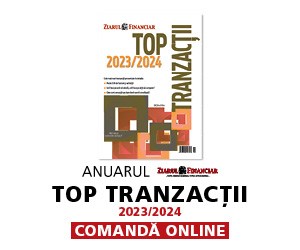How would you like to pay: with new ROL or with old ROL? As of next summer, this question will be asked every day. One loaf of bread will go back to its (very) old price of 50 bani (1 ROL a 100 bani) or 1 new ROL, whereas 1 euro will be worth 4-5 ROL. Average wages will thus amount to 500 ROL per month. New lei, that is.
Four zeroes will be slashed from the ROL's tail on July 1, 2005, with both the new and the old banknotes and coins being used up until the end of 2006, according to a law draft endorsed yesterday by the Government. Following this operation, the current 10,000 ROL banknote will accordingly turn into 1 ROL, whereas the 1,000,000 ROL bill will be replaced by the 100 ROL banknote. In other words, one new ROL will be worth 10,000 old ROL.
The National Bank will release the new banknotes and coins as of July 1, 2005. The current bills and coins will circulate for another year and a half afterwards, until December 31, 2006. Then, the National Bank will replace them with the new ones. In line with the euro system, the 500 ROL bill will also appear, equivalent to 5,000,000 old ROL.
Romanians will be allowed to change their old banknotes and coins into the new units for a maximum of three years, until December 31, 2009. The operation will be performed at branches of the National Bank together with outlets of credit institutions licensed to perform the operation.
National Bank of Romania Governor Mugur Isarescu yesterday said that no one will incur any losses from denomination, which will in fact simplify payments and financial-accounting operations. "This law is about trust in the national currency and will mark the end of the difficult transition period and soaring inflation," Isarescu said.
In his turn, the Minister of Public Finances, Mihai Tanasescu, says that denomination, defined as the official lowering of a nation's currency, is a technical process which has also been applied by other countries in the past few years, such as Poland, Russia and Bulgaria.
The 'heavy' ROL and an inflation rate of less than 10% have been the personal goals of National Bank Governor Mugur Isarescu, who has headed the NBR since 1990. It is worth remembering that all other countries in Central and Eastern Europe have managed to escape their two-digit inflation rates. Moreover, the Polish zloty or the Hungarian forint are currencies that can be traded on any market in the world, as the capital accounts are fully convertible.
In every country, national banks aim to develop and sustain confidence in their national currencies, this being their only product. The ROL has been battered by inflation and severe reductions in value, with the trust of many Romanians in their national currency similarly plummeting. Most loans are taken out in euros or US dollars; mobile telephony operators set their prices in foreign currency; and real estate transactions are also conducted in foreign currency.
sorin.pislaru@zf.ro
Pentru alte știri, analize, articole și informații din business în timp real urmărește Ziarul Financiar pe WhatsApp Channels











































